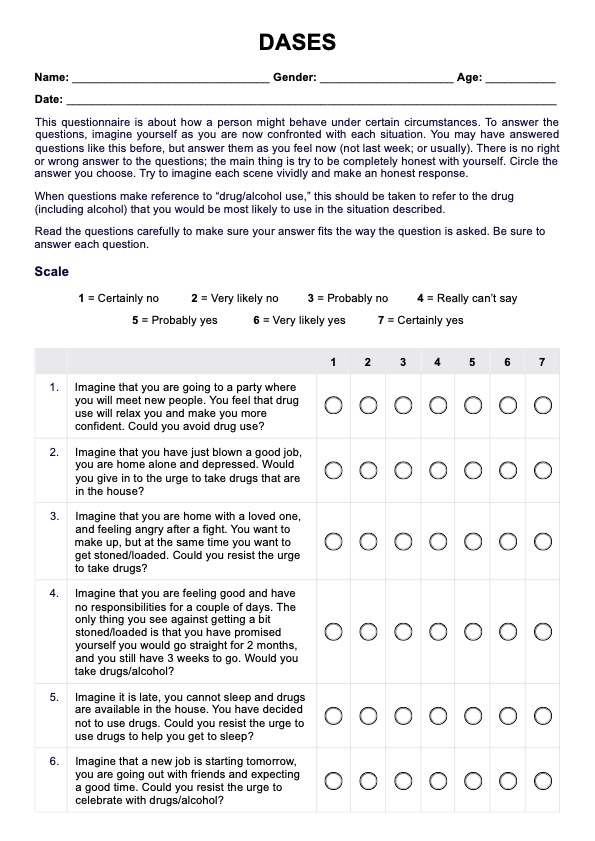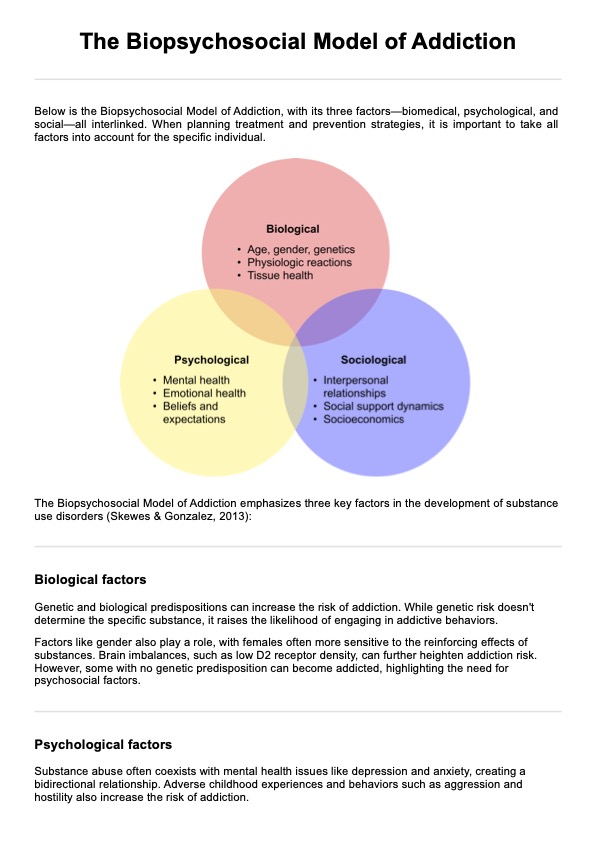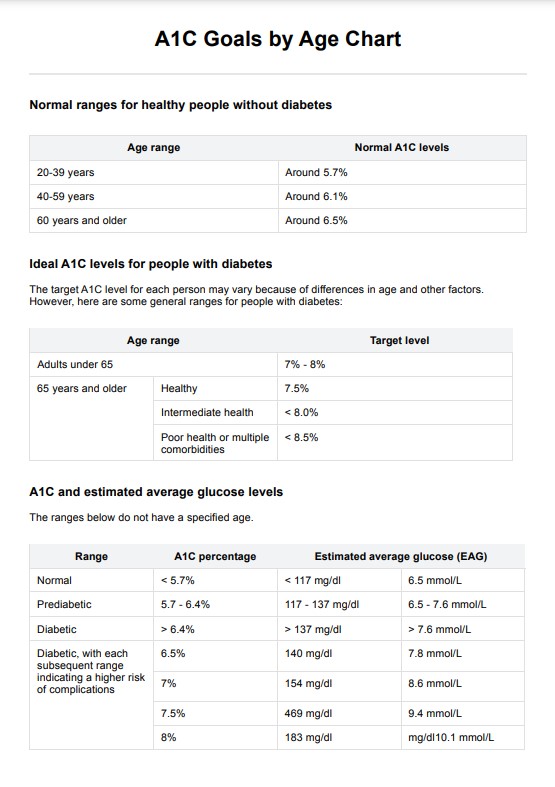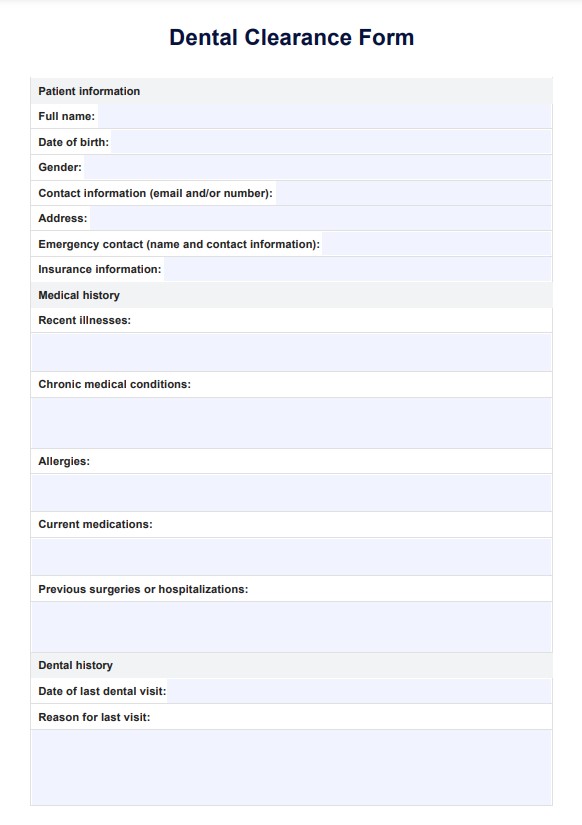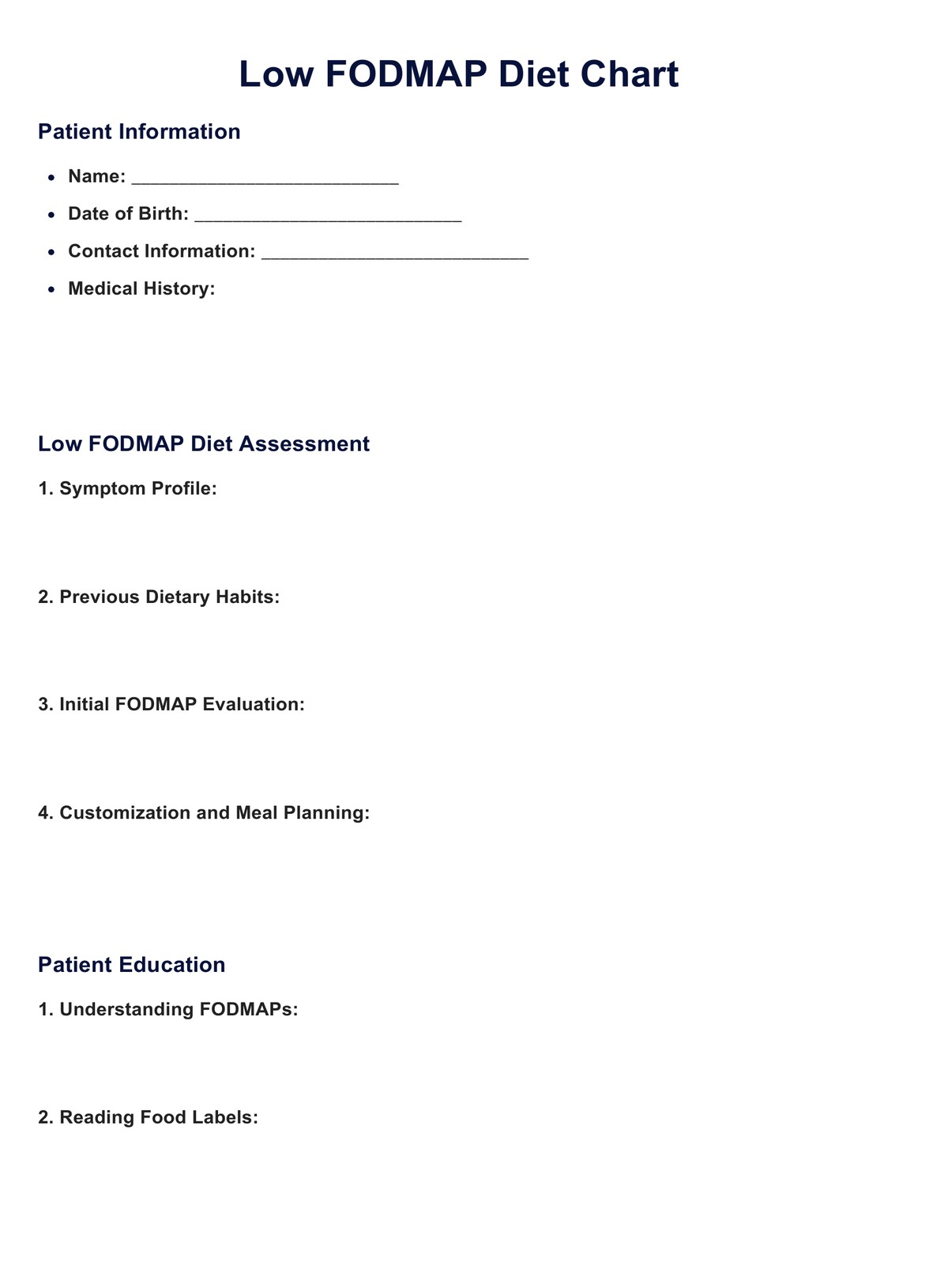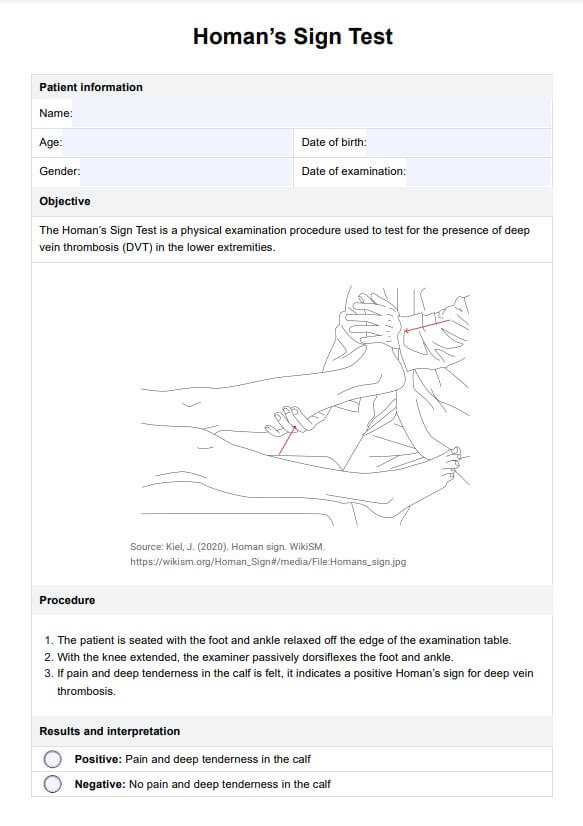Stinchfield Test
Explore the comprehensive guide to the Stinchfield Test, a valuable tool for diagnosing hip pathologies. Includes steps, benefits, research, and a free PDF download.


What is a Stinchfield Test?
The Stinchfield Test, also known as the Stinchfield Hip Test, is a clinical diagnostic procedure used to differentiate between intra-articular and extra-articular hip pathologies.
Healthcare professionals use this test to identify specific causes of hip pain, such as arthritis, fractures, infections, or tendonitis. A positive Stinchfield Test often indicates underlying issues within the hip joint, helping guide further treatment and interventions.
The is a critical component in evaluating hip-related complaints. By applying resisted hip flexion, the test simulates walking forces across the hip joint, providing insights into the functional integrity of the hip. The non-invasive nature of the test makes it suitable for various clinical settings, adding to its popularity among practitioners.
The test's focus on active participation from the patient, coupled with specific assessment criteria, allows for a precise understanding of the hip pain's origin. Its ability to elicit pain from joint and rare hip pathologies underscores its diagnostic value. Furthermore, the Stinchfield Test can be modified to accommodate various patient conditions and needs, enhancing its applicability.
Stinchfield Test Template
Stinchfield Test Example
How does it work?
The Stinchfield Test is a simple yet effective tool for diagnosing hip-related issues. It's a non-invasive procedure that can be performed in a clinical setting.
The test involves a combination of hip flexion and resisted leg raising to place stress on the hip joint. The patient's response to this stress, particularly the location, and nature of any pain, provides insights into the underlying pathology.
Here are the steps involved in performing the Stinchfield Test:
Step 1: Patient Positioning
The patient is placed in a supine position on the examination table. Proper alignment of the spine and hips is ensured.
Step 2: Leg Raising
Ask the patient to raise the affected leg, flexing the hip 20-45° with the knee in extension. This initiates the assessment of the hip joint's function.
Step 3: Resistance Application
Apply gentle pressure to the raised thigh, attempting to force it back down while the patient resists. The resistance adds stress to the hip joint, revealing potential pathologies.
Step 4: Pain Assessment
Assess for pain in specific areas, indicating either intra-articular or extra-articular pathology. This critical step requires careful observation and communication with the patient.
Step 5: Modifications
The test can be adjusted depending on the patient's comfort and specific clinical situation. This may include performing the test with external rotation or altering the degree of hip flexion.
Step 6: Interpretation
Analyze the results in conjunction with other clinical findings to determine the cause of the hip pain. Documentation of findings is essential, as it contributes to an overall assessment and guides treatment planning.
Step 7: Follow-Up
Depending on the results, further investigations like imaging or referral to a specialist may be necessary. Clear communication of the results and next steps to the patient is essential in this phase.
The steps in the Stinchfield Test are methodical and must be performed carefully and carefully. Proper communication with the patient is key to obtaining accurate results. The details of each step allow for an in-depth evaluation of the hip joint and surrounding structures.
When would you use this Form?
The Stinchfield Test form is not merely a clinical procedure but a bridge connecting meticulous examination with tailored care. In a world where evidence-based practice reigns supreme, the Stinchfield Test form serves as documented proof of the diagnostic process. It brings uniformity, clarity, and accuracy to the diagnosis of hip pain, aligning with best practices and ensuring optimal patient outcomes.
Whether you're a seasoned orthopedic surgeon or a budding physical therapist, the Stinchfield Test form provides the structure to systematically assess and interpret hip pain. It plays a crucial role in patient management, helping practitioners navigate the complexities of hip pathologies.
Uses for Relevant Practitioners:
- Orthopedic Specialists: For orthopedic doctors, the Stinchfield Test is vital for identifying underlying hip issues like fractures or arthritis. The form's standardized approach ensures that no key details are overlooked.
- Physical Therapists: In physical therapy, hip function assessment is paramount. The Stinchfield Test form guides therapists in evaluating and creating personalized rehabilitation strategies.
- General Practitioners: Primary care physicians can use this form to conduct a preliminary evaluation of hip pain, streamlining referrals to specialists if necessary.
- Sports Medicine Professionals: Athletes often suffer from hip injuries. Sports medicine experts utilize the Stinchfield Test to detect these issues and develop recovery plans.
- Rheumatologists: Hip pain could signal underlying inflammatory conditions. Rheumatologists can use the Stinchfield Test to diagnose and manage conditions like rheumatoid arthritis or lupus-related hip problems.
- Emergency Room Physicians: In acute cases, such as falls or accidents, the Stinchfield Test form can assist ER physicians in quickly assessing the extent of hip injuries.
- Occupational Therapists: Those working on restoring daily living skills might find the Stinchfield Test helpful in understanding hip joint limitations that affect daily functioning.
Benefits
The Stinchfield Test is more than just an instrument of diagnosis; it's a window into the patient's physical health, opening opportunities for targeted interventions. The beauty of the Stinchfield Test lies in its simplicity, accessibility, and precision.
The Stinchfield Test stands out as a testament to efficient and patient-centered care in the ever-evolving healthcare landscape, where time and resources are invaluable. Its multi-faceted benefits transcend specialty boundaries, making it a preferred choice for practitioners across various fields.
Here are the benefits of the Stinchfield Test:
1. Non-Invasive
It eliminates the need for uncomfortable and costly imaging techniques, enhancing patient comfort.
2. Quick Diagnosis
Time is of the essence in healthcare. The Stinchfield Test delivers immediate insights, speeding up the treatment process.
3. Guides Treatment
With precise diagnosis comes effective treatment. The test serves as a roadmap for personalized care plans.
4. Highly Specific
Its ability to distinguish between hip pathologies ensures accurate treatment targeting.
5. Versatile
The Stinchfield Test is not confined to one specialty. Its broad application across healthcare settings makes it universally valuable.
6. Educational Tool
Patients often feel empowered when they understand their condition. The test is an educational platform bridging the gap between patient and practitioner.
7. Quality Improvement
Consistent use of the Stinchfield Test promotes standardization and quality of care, aligning with best practices and enhancing patient satisfaction.
Research & Evidence
The Stinchfield Test stands tall on the foundation of clinical wisdom and biomechanical principles. Named after Dr. Frank Stinchfield, its genesis marked a significant step towards understanding hip pathologies without invasive measures.
However, the Stinchfield Test is not without limitations. Though widely adopted, it has not been the subject of extensive scientific research. Its effectiveness rests mainly on empirical evidence and clinical expertise. This gap in research does not diminish its value but highlights an opportunity for further exploration.
Recent years have seen a resurgence in interest in the Stinchfield Test, with researchers and clinicians revisiting its applications and mechanics. Several studies have begun investigating its validity, sensitivity, and specificity, but more extensive research is still needed.
The evidence supports the Stinchfield Test as a practical and useful tool, particularly when combined with a comprehensive clinical examination. Its continued use and relevance in modern medicine reflect its inherent value and potential, solidifying its place in the diagnostic arsenal.
Commonly asked questions
Stinchfield Tests are commonly used by orthopedic specialists, physical therapists, general practitioners, sports medicine professionals, and rheumatologists to diagnose and differentiate hip pathologies.
Stinchfield Tests are used when there's a need to investigate unexplained hip pain, particularly when differentiating between intra-articular and extra-articular hip issues.
Stinchfield Tests are performed by placing the patient supine and executing a series of hip flexion and resistance movements. The practitioner assesses pain response and uses the findings to diagnose underlying hip pathologies. Carepatron's Stinchfield Test app offers an efficient way to perform and document this test.


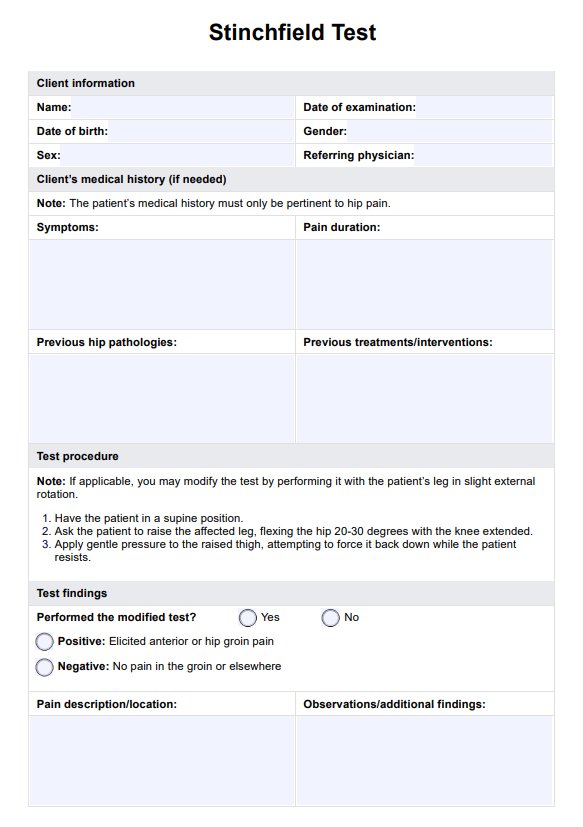
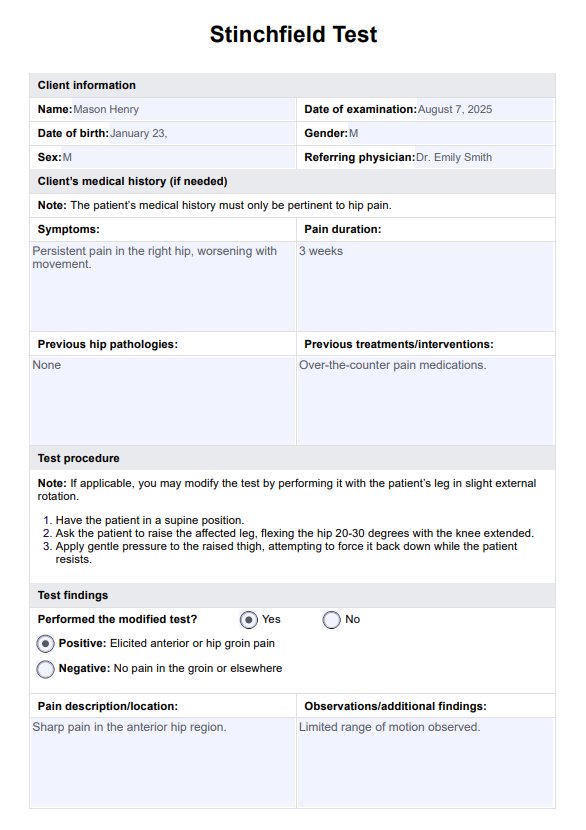

















-template.jpg)



